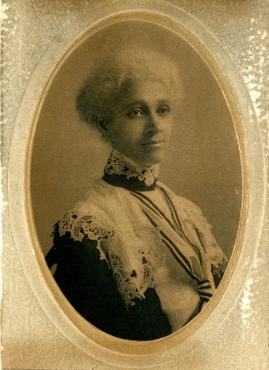Anna Evans Murray facts for kids
Quick facts for kids
Anna Evans Murray
|
|
|---|---|

Anna Evans Murray, c. 1876
|
|
| Born |
Anna Evans
1857 Oberlin, Ohio, U.S.
|
| Died | May 5, 1955 Washington, D.C., U.S.
|
| Alma mater | Oberlin College |
| Known for | |
| Spouse(s) | Daniel Alexander Payne Murray |
| Children | 7 |
Anna Evans Murray (1857–1955) was an amazing American leader and teacher. She strongly believed that all young children should have access to free kindergarten classes. She also worked hard to make sure teachers were trained to teach these classes. In 1898, she convinced the U.S. Congress to provide money for kindergarten. This was the first time the government ever funded kindergarten! She also helped bring kindergarten into the public schools in Washington, D.C..
Growing Up and Family
Anna Evans was born in Oberlin, Ohio, in 1857. She was one of eight children. Her father, Henry Evans, was an African-American undertaker and cabinetmaker. Her mother, Henrietta Leary Evans, had French and Croatan heritage. Anna graduated from Oberlin College in 1876.
Her family was very active in fighting for fairness and rights.
- In 1858, her father was arrested for trying to help a person seeking freedom from slavery. This event was called the Oberlin–Wellington Rescue.
- Her uncle, Lewis Sheridan Leary, died during John Brown's raid at Harpers Ferry, West Virginia.
- Her cousin, John Anthony Copeland Jr., also died with John Brown.
- Years later, her mother gave a speech at Harpers Ferry for the Niagara Movement. This was an important civil rights group started by W. E. B. Du Bois.
Anna's sister, Mary Evans Wilson, was a leading civil rights activist in Boston. Mary's husband, Butler R. Wilson, was a well-known civil rights lawyer. He was also the president of the Boston branch of the National Association for the Advancement of Colored People (NAACP).
Her Work for Kids
After college, Anna moved to Washington, D.C.. She taught music at the Lucretia Mott Elementary School and at Howard University. Her time at the Mott school showed her how much free kindergarten was needed. She also saw the need for special training for kindergarten teachers.
- Fighting for Free Kindergarten: Starting in 1895, Anna led the Education Committee for the National League of Colored Women (NLCW). She pushed for free kindergarten classes for Black children in Washington D.C.
- Starting Schools: The League opened several local kindergartens. In 1896, Anna took charge of a special school. This school, called a normal school, trained teachers to work in kindergartens.
- Getting Government Help: In 1898, she successfully convinced the U.S. Congress to give money for kindergarten classes in D.C. public schools. This was a huge step! It was the first time federal money was used for kindergarten education.
That same year, Anna and Sara I. Fleetwood represented the NLCW at a big meeting. It was called the National Congress of Mothers. This meeting later led to the creation of the Parent-Teacher Association (PTA). At the meeting, Anna met a kind person named Phoebe Hearst. Anna persuaded her to pay for the Kindergarten Training School for five years.
In 1906, Anna again secured government money. This time, it was for kindergarten teacher training at the Miner Normal School. In the early 1900s, she managed the kindergarten program at the Colored Settlement House. Important leaders like Anna J. Cooper and Mary Church Terrell were also involved there. Anna became known across the country for her work in kindergarten education. Many groups asked her for advice.
- Early Learning: In 1904, she wrote an article saying that children should start learning much earlier than age six. At that time, six was the legal age to start public school. She believed that nursery schools should be part of the public school system. She kept fighting for this idea throughout her life.
- Other Contributions: She also wrote articles about history. She helped her husband with his book, Historical and Biographical Encyclopedia of the Colored Race.
- Marching for Rights: On March 3, 1913, she was one of fewer than 100 Black women who bravely marched in the Woman's suffrage parade. This parade was for women's right to vote.
- Later Years: Even in her seventies, she continued to work for her community. She asked Congress for a health center to fight tuberculosis. She also asked for land to be turned into playgrounds near two local elementary schools.
Anna was a vice president of the Public School Association. She was also an officer of the Association for Childhood Education. She was a member of the NAACP, the Citizens Advisory Committee on Hot Lunches for School Children, the YWCA, and St. Luke's Episcopal Church.
Personal Life
In 1879, Anna married Daniel Alexander Payne Murray. He was a historian and an assistant librarian at the Library of Congress. They had seven children together. Five of their children grew up, went to college, and became successful in their jobs. Anna had twelve grandchildren. She passed away at her home in D.C. on May 5, 1955, when she was 98 years old.

